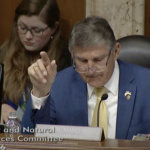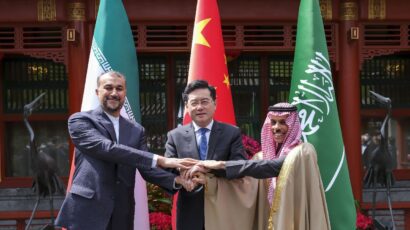The fallacy of the Megatons to Megawatts program
By Pavel Podvig | July 23, 2008
Few U.S.-Russian cooperation efforts are more popular and less controversial than the “Megatons to Megawatts” program, also known as the HEU-LEU deal, which converts Russia’s highly enriched uranium (HEU) from nuclear weapons into low-enriched uranium (LEU) for U.S. nuclear power reactors. Under the agreement that the countries signed in 1993, Moscow made a commitment to eliminate 500 metric tons of HEU–probably more than one-third of the total HEU stock that the Soviet Union produced during the Cold War. About 340 metric tons of HEU has already been converted into LEU, and the Russian uranium currently provides one-half of U.S. nuclear power, or about 10 percent of the country’s electricity supply.
If 30 metric tons of HEU is downblended each year, the program will reach its goal in 2013, the year the initial agreement is set to expire. This raises the question, “What next?” In the United States, the HEU-LEU deal is universally viewed as a great success. Therefore, it’s not surprising that there’s been no shortage of proposals to accelerate the rate of downblending or to extend the program beyond its original deadline.
Because the U.S.-Russian HEU-LEU deal is implemented in a way that substantially increases the risk of theft of weapon-grade material, extending it would be wrongheaded.”
Russia has been skeptical about these proposals, in part because the economics of the deal doesn’t exactly favor Moscow. Rosatom, the government corporation that regulates the Russian nuclear complex, is on record saying that it has no intention of continuing to downblend HEU after 2013. Still, many in the United States believe that with the right combination of incentives and minor changes in the program’s structure, Washington could (and should) prod Moscow into eliminating more HEU.
But because the deal is implemented in a way that substantially increases the risk of theft of weapon-grade material, extending it would be wrongheaded.
A recent Energy Department press release maintains, “Every kilogram of HEU eliminated under the HEU Purchase Agreement is one that will not require sustained security upgrades and can never be stolen for use in a crude terrorist weapon.” Unfortunately, this isn’t the case. Instead, almost every kilogram of HEU that’s eliminated is taken from a reasonably secured storage area and put on a train for transport, where the risk of it being stolen is much higher. At least one-half of these transfers aren’t necessary.
Most of the uranium used in the program comes from nuclear weapons, which are removed from centralized storage sites administered by the Ministry of Defense and brought to a disassembly facility in the closed city of Lesnoy. Next, the uranium and plutonium from the weapons are sent to the Mayak facility in Ozersk and the Siberian Chemical Combine in Seversk, where the uranium is purified and converted into uranium oxide. This highly enriched uranium oxide is still a sensitive weapon-grade material. Mayak then sends all of its uranium oxide to Seversk and Zelenogorsk, where it’s converted to uranium hexafluoride to prepare it for the final downblending. But HEU shipments don’t stop here–instead of downblending all of the highly enriched uranium hexafluoride on-site, Seversk sends most of it to another facility in Novouralsk. All told, HEU in various forms moves thousands of miles across Russia by train.
The reason Russia chose to implement the program in this way is simple: During the program’s early days in the 1990s when the Russian economy was under tremendous stress and the former Soviet nuclear cities couldn’t rely on the centralized budget, the revenues from the HEU-LEU deal helped support these nuclear cities and helped to ensure that weapon materials were safe and secure. Spreading out the work was the right decision at the time. But times have changed, and the risks associated with transporting HEU now outweigh all of the benefits.
The notion that each kilogram of HEU that’s eliminated by the program would no longer require security is correct only in a general sense. In practice, it’s true only if each kilogram is guarded individually, which certainly isn’t the case. The incremental cost of providing security of additional material at an existing facility is essentially zero. Skeptics may say that Russia doesn’t have enough storage capacity to accommodate the HEU that’s extracted from the dismantled weapons, but even if this is the case, there are still better strategies for dealing with it. For example, Russia could expand the use of the U.S.-financed Fissile Material Storage Facility at Mayak, a building that can probably accommodate hundreds of tons of HEU and plutonium. Currently, Russia plans to use only about one-quarter of that facility.
If that’s not enough, the weapon material could be kept in the warheads, as the Russian Ministry of Defense has a lot of spare storage capacity that’s reasonably well-secured–thanks in large part to U.S. assistance. The downside of this option is that more nuclear warheads would be around longer, but that’s the price of securing the material. Another option would be to consolidate all activities at Seversk, eliminating all unnecessary transfers.
I don’t want to suggest that it’s safer to keep HEU around than to eliminate it. Russia and the United States should continue to eliminate their HEU stocks, whether as part of a restructured HEU-LEU deal or in some other way. The experience they have gained during implementation of the HEU-LEU program has been extremely valuable. In particular, the current program includes important transparency measures that are applied in Russia and could probably extend to the downblending of U.S. HEU as well.
As for extending it beyond 2013 or accelerating the current downblending rate, it should be noted that the current program’s nonproliferation benefits aren’t as strong as commonly believed. The efforts and resources spent on attempting to extend it would be much better spent elsewhere–on conversion of HEU research and naval reactors or on eliminating weapon-grade materials from small facilities across Russia.
Together, we make the world safer.
The Bulletin elevates expert voices above the noise. But as an independent nonprofit organization, our operations depend on the support of readers like you. Help us continue to deliver quality journalism that holds leaders accountable. Your support of our work at any level is important. In return, we promise our coverage will be understandable, influential, vigilant, solution-oriented, and fair-minded. Together we can make a difference.
Topics: Columnists, Nuclear Energy















